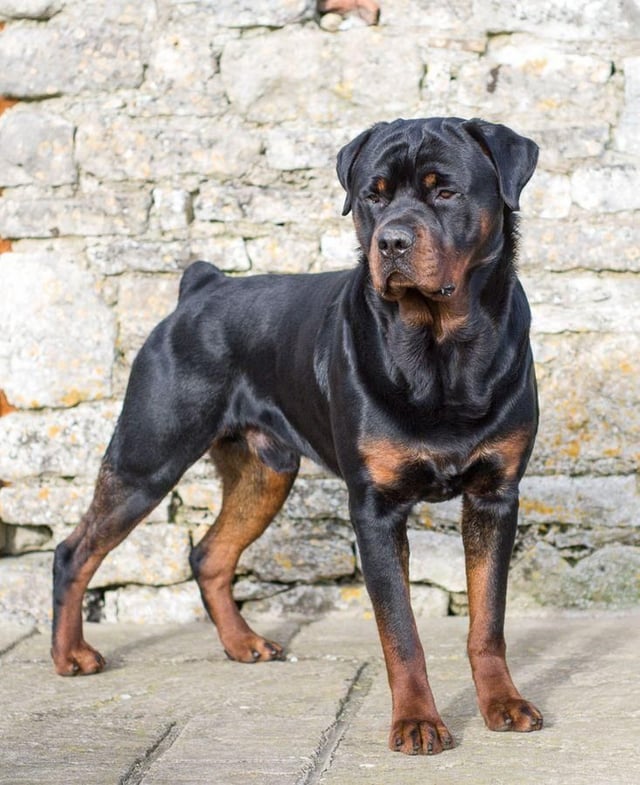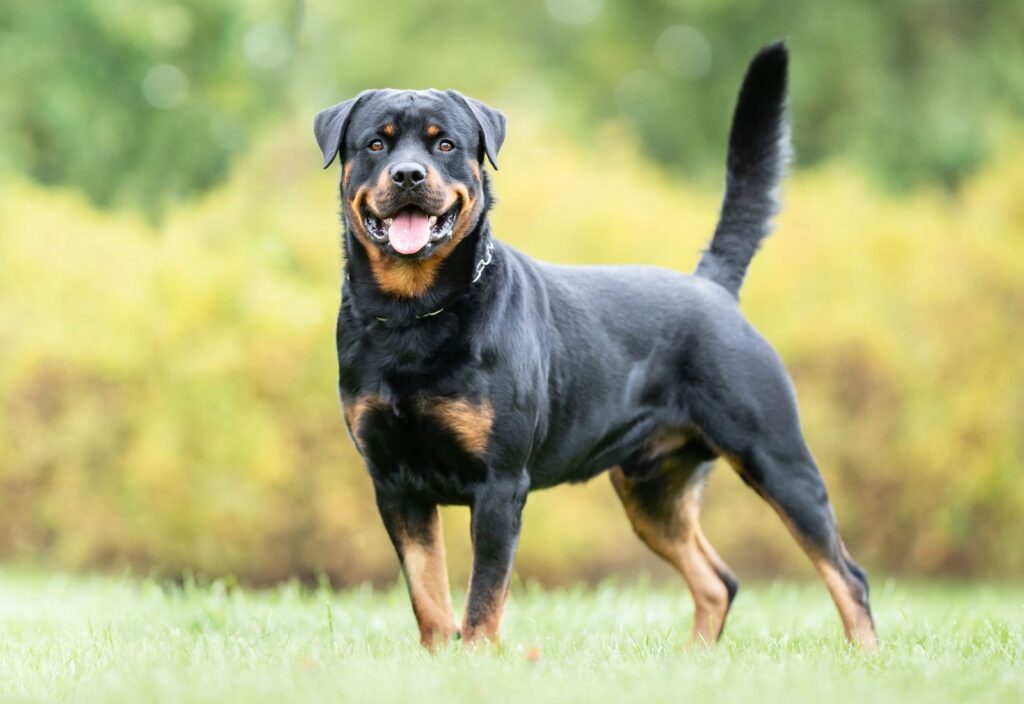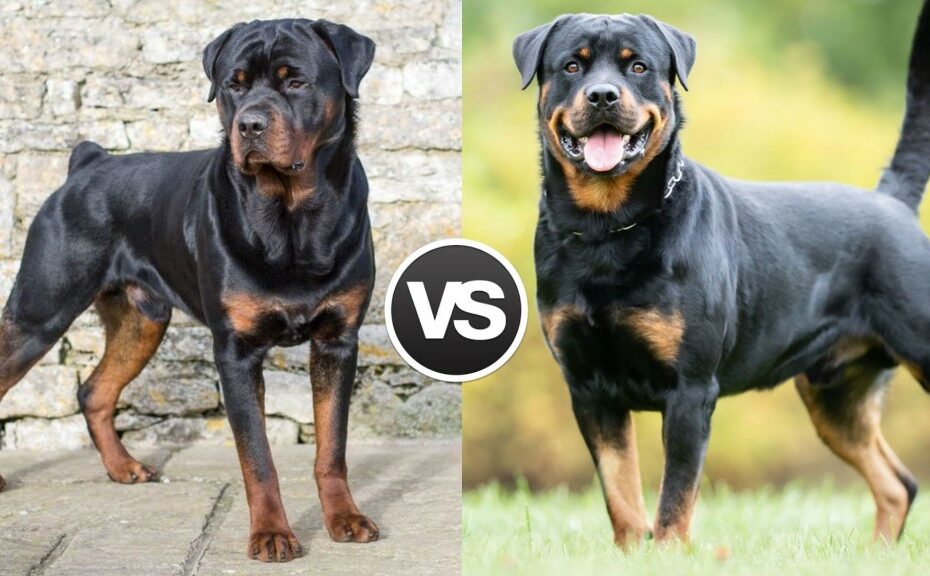German vs American Rottweiler: Which One’s Right for You? – Rottweilers have long been admired as powerful, loyal, and intelligent companions. With their imposing stature and unwavering devotion, they excel as protectors, working dogs, and beloved family pets. But did you know that not all Rottweilers are the same? Depending on their lineage, they can vary in appearance, temperament, and even purpose.
The two main types—German Rottweilers and American Rottweilers—stem from different breeding standards and priorities. While they share the same roots, subtle differences might make one a better fit for your lifestyle than the other.
In this guide, we’ll break down the key distinctions between German and American Rottweilers, helping you decide which one aligns best with your needs.
German Rottweiler: The Original Guardian


Origin & Breeding History
German Rottweilers trace their lineage directly back to the breed’s homeland—Germany. They are bred under strict regulations set by the Allgemeiner Deutscher Rottweiler-Klub (ADRK), which emphasizes health, working ability, and adherence to traditional standards. German breeders prioritize temperament, structure, and functionality, ensuring these dogs remain true to their original roles as herders and protectors.
Also Read: Loving Mastiff Breeds That Are Strong & Gentle Giants
Physical Traits
- Build: Stockier, with a broader head and chest.
- Size: Males typically weigh 95-135 lbs; females 80-100 lbs.
- Coat & Color: Thick, dense coat with rich black and mahogany tan markings.
- Tail: Often left natural (though docking was once common).
Temperament & Personality
German Rottweilers are known for their calm, confident, and disciplined demeanor. Bred for work, they have a strong protective instinct but are not overly aggressive when properly socialized. They tend to be:
- Highly trainable and eager to please.
- More reserved with strangers but deeply loyal to their families.
- Less hyperactive than their American counterparts.
Trainability & Work Ethic
Thanks to their working-dog heritage, German Rottweilers excel in:
- Obedience training
- Protection work
- Schutzhund (a German dog sport testing tracking, obedience, and protection)
They thrive with consistent, structured training and a job to do.
Ideal Living Conditions
- Best suited for experienced owners who can provide firm, fair leadership.
- Needs ample space (a house with a yard is ideal).
- Requires daily mental and physical stimulation to prevent boredom.
Family Compatibility
- Excellent with children when raised with them.
- Naturally protective, making them great guardians.
- May be aloof with strangers but not unnecessarily aggressive.
Also Read: 15 Most Popular Dog Breeds in America Right Now
American Rottweiler: The Adaptable Companion


Origin & Breeding History
American Rottweilers descend from German lines but have been bred with different priorities—often focusing on appearance, size, and companionship rather than strict working standards. While some U.S. breeders adhere to German principles, others prioritize a more “show-oriented” look.
Physical Traits
- Build: Slightly leaner and taller than German Rotties.
- Size: Males weigh 85-130 lbs; females 75-95 lbs.
- Coat & Color: Similar coloring, but sometimes with less pronounced bone structure.
- Tail: More commonly docked in the U.S.
Temperament & Personality
American Rottweilers tend to be:
- More outgoing and social with strangers.
- Slightly higher energy and playful.
- Less intense in protection instincts (though still loyal).
They are still intelligent and trainable but may not have the same disciplined focus as German-bred Rotties.
Trainability & Work Ethic
- Still highly trainable but may not excel as consistently in advanced protection work.
- Better suited for family life, agility, or casual obedience training.
- Can be more adaptable to varied lifestyles.
Ideal Living Conditions
- Can adjust to apartment living if exercised sufficiently.
- Needs regular walks, playtime, and training to stay well-behaved.
- May be a better fit for first-time Rottweiler owners due to their slightly easier-going nature.
Also Read: 20 Best Small Dog Breeds That Are Perfect for Families
Family Compatibility
- Often more immediately friendly with new people.
- Great with kids when properly socialized.
- Still protective but may be less “serious” than German Rotties.
German vs. American Rottweiler: Side-by-Side Comparison
| Trait | German Rottweiler | American Rottweiler |
|---|---|---|
| Build | Stockier, broader | Leaner, taller |
| Temperament | Calmer, more reserved | More outgoing, playful |
| Trainability | Highly disciplined, work-driven | Smart but more adaptable |
| Protectiveness | Strong natural guard instinct | Protective but less intense |
| Best For | Experienced owners, working roles | Families, first-time owners |
| Living Space | Needs a yard | Can adapt to apartments |
Which One Should You Choose?
Your decision should depend on:
✔ Experience Level – German Rotties need confident handling; Americans may be more forgiving.
✔ Lifestyle – Active, working homes suit Germans; adaptable families may prefer Americans.
✔ Purpose – Want a guard dog or sport competitor? German. Need a loyal family pet? American.
Regardless of type, responsible ownership is key. Proper training, socialization, and care matter more than lineage alone.
Final Thoughts
Both German and American Rottweilers are incredible dogs—intelligent, loyal, and deeply devoted to their families. The best choice depends on what you’re looking for in a companion.
If you value traditional working traits and a disciplined demeanor, the German Rottweiler may be your match. If you prefer a slightly more easygoing, adaptable companion, the American Rottweiler could be the better fit.
